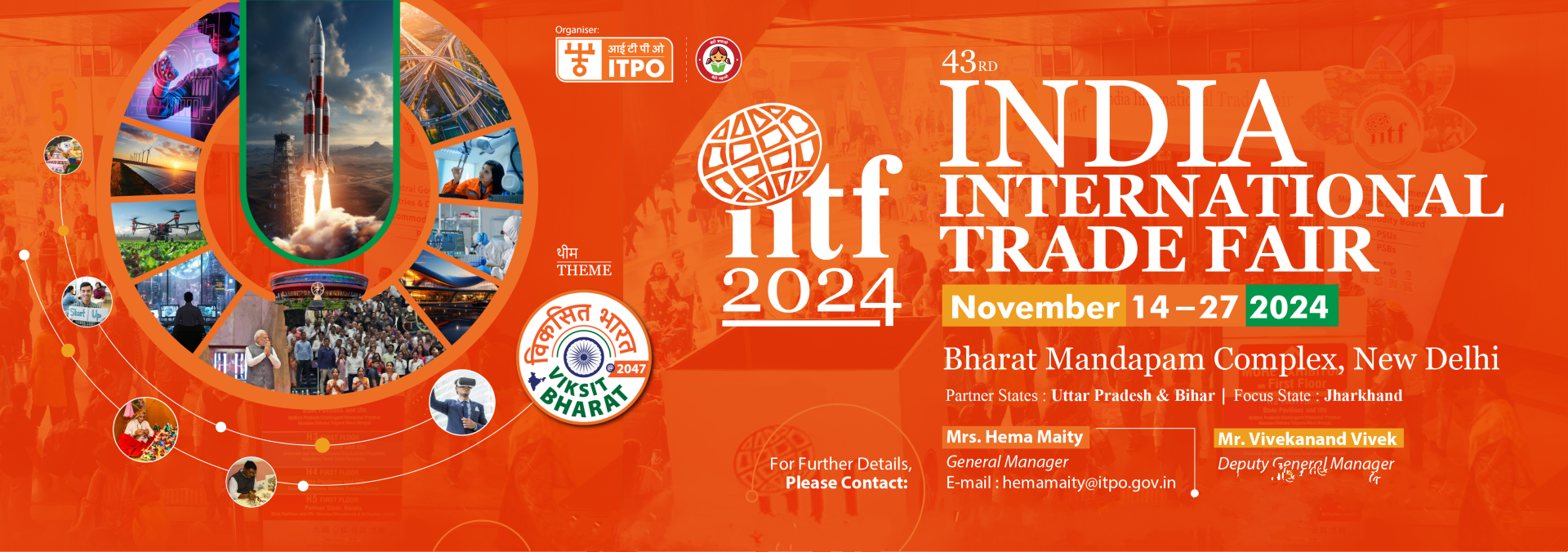Fashion
Accessibility and Inclusion: The New Priorities, Challenges and Opportunities in the Trade Fair Landscape, Future Outlook: Trade Fairs Beyond 2024, Industry-Specific Innovations in Trade Fair Design, Key Trends Reshaping Trade Fairs in 2024, Preparing for Successful Trade Fair Participation, The Economic Impact of Trade Fairs in 2024, The Evolution of Trade Fairs in a Post-Pandemic World
Lynn
0 Comments
Trade Fair 2024: The Resurgence of Global Commerce in the Post-Pandemic Era
In an era where digital connectivity has become the norm, the return of the in-person Trade Fair 2024 marks a significant milestone in global commerce. These vibrant hubs of innovation, networking, and deal-making have undergone a remarkable transformation, blending traditional exhibition formats with cutting-edge technology to create immersive experiences that cannot be replicated online.
The Evolution of Trade Fairs in a Post-Pandemic World
The trade fair industry experienced unprecedented disruption during the global pandemic, forcing organizers to pivot to virtual formats. However, 2024 has witnessed a robust return to physical events, albeit with significant innovations. The new generation of trade fairs combines the irreplaceable value of face-to-face interactions with technological advancements that enhance the overall experience.
According to recent industry reports, global trade fair participation has increased by 28% compared to pre-pandemic levels, indicating a strong desire among businesses to reconnect in person. This resurgence is driven by the recognition that despite the convenience of digital alternatives, certain aspects of business—particularly relationship building and sensory product experiences remain most effective in physical settings.
Key Trends Reshaping Trade Fairs in 2024
Hybrid Formats: The Best of Both Worlds
The most successful trade fairs of 2024 have embraced hybrid models that extend their reach beyond the exhibition halls. Live-streaming of keynote speeches, virtual booths complementing physical displays, and year-round digital platforms have become standard features. These hybrid approaches have expanded the average trade fair’s global reach by approximately 45%, according to the Global Exhibition Research Foundation.
The Consumer Electronics Show (CES) 2024 exemplified this trend with its “Digital Twin” concept, where every physical booth had a corresponding virtual presence, allowing remote attendees to engage with exhibitors in real-time through sophisticated avatar technology.
Sustainability at the Forefront
Environmental consciousness has moved from being a peripheral concern to a central organizing principle for Trade Fair 2024. The implementation of zero-waste policies, carbon-neutral venues, and sustainable booth design requirements has become increasingly common.
The Frankfurt Book Fair 2024 made headlines with its commitment to complete carbon neutrality, utilizing renewable energy sources, implementing comprehensive recycling programs, and offsetting unavoidable emissions through verified climate protection projects. Exhibitors were required to adhere to strict sustainability guidelines, resulting in a 60% reduction in the event’s environmental footprint compared to its 2019 edition.
Tech-Enhanced Networking
Artificial intelligence has revolutionized the networking aspect of trade fairs. Advanced matchmaking algorithms now analyze attendee profiles and business objectives to suggest potential connections, optimizing the value of time spent at these events.
The Mobile World Congress 2024 in Barcelona implemented a sophisticated AI-driven networking platform that reported a 35% increase in successful business matches compared to traditional networking methods. Attendees received personalized recommendations for contacts, booths, and sessions based on their industry, role, and stated objectives.
Industry-Specific Innovations in Trade Fair Design
Manufacturing and Industrial Trade Fairs
In the manufacturing sector, trade fairs have embraced immersive technologies to showcase large-scale equipment that would be impractical to transport. Hannover Messe 2024, the world’s leading industrial technology fair, featured extensive use of mixed reality, allowing visitors to interact with life-sized holograms of heavy machinery, examining their features and operations in detail without the logistical challenges of physical transportation.
Fashion and Design Exhibitions
Fashion trade fairs have undergone perhaps the most dramatic transformation. Events like Milan’s MICAM 2024 have incorporated sensory experiences that allow buyers to not only see but feel fabrics through haptic technology. Digital fashion showcases using augmented reality have enabled designers to present seasonal collections with minimal environmental impact while maintaining the excitement and inspiration of traditional runway shows.
Food and Beverage Expos
Food and beverage trade fairs face the unique challenge of conveying taste experiences. In response, events like Anuga 2024 in Cologne have pioneered “flavor profiling technology” that creates detailed digital representations of food products’ taste profiles, complementing traditional sampling opportunities and addressing hygiene concerns that lingered post-pandemic.
The Economic Impact of Trade Fairs in 2024
Trade fairs continue to be powerful economic engines for host cities and industries. The average large-scale international Trade Fair 2024 generated approximately €170 million in direct economic impact for its host city, according to the International Exhibition Statistics Union. This includes spending on accommodations, restaurants, transportation, and local services.
For exhibiting companies, particularly small and medium enterprises, trade fairs remain critical business development opportunities. A survey conducted across major 2024 trade events revealed that 68% of exhibitors secured deals within three months of participation, with an average return on investment of 7:1 for their exhibition expenditure.
Accessibility and Inclusion: The New Priorities
The trade fair industry has made significant strides in addressing accessibility and inclusion. Physical venues have improved infrastructure to accommodate visitors with mobility challenges, while digital components have implemented features for visitors with visual or hearing impairments.
Beyond physical accessibility, Trade Fair 2024 has focused on geographical and economic inclusion. Regional satellite events connected to major fairs have emerged as a solution for professionals unable to travel long distances, while scholarship programs have enabled startups from emerging economies to showcase their innovations alongside established industry players.
Challenges and Opportunities in the Trade Fair Landscape
Despite the positive trajectory, the trade fair industry faces several challenges. Rising operational costs due to inflation have put pressure on both organizers and exhibitors. The Exhibitions and Trade Fair Association reports that the average cost of participation for exhibitors increased by 12% in 2024 compared to 2023, necessitating a clearer demonstration of ROI.
Travel restrictions in certain regions and ongoing global supply chain disruptions have also affected participation from specific countries, creating imbalances in international representation at some events.
However, these challenges have spurred innovation. Organizers are exploring decentralized models with simultaneous smaller events in multiple locations, connected through technology. The concept of “Trade Fair as a Service” has emerged, with year-round engagement opportunities replacing the traditional time-limited event model.
Future Outlook: Trade Fairs Beyond 2024
Looking ahead, industry experts predict further evolution of the Trade Fair 2024 concept. The integration of metaverse technologies is expected to create entirely new categories of hybrid experiences. Blockchain applications for verifiable business credentials and secure contract negotiations during fairs are in development stages and are likely to become mainstream by 2026.
Environmental considerations will continue to drive innovation, with a projected 70% of major trade fairs committing to carbon neutrality by 2027. The economic model is also evolving, with data-driven value creation becoming as important as traditional booth rental revenues for organizers.
Preparing for Successful Trade Fair Participation
For businesses considering trade fair participation in the latter part of Trade Fair 2024 and beyond, preparation strategies have become more sophisticated. The most successful exhibitors are those who:
- Begin digital engagement with potential clients weeks before the physical event
- Develop clear objectives and metrics for measuring success
- Integrate physical and digital components of their presence seamlessly
- Focus on creating memorable experiences rather than simply displaying products
- Leverage data analytics to refine their approach throughout the event
Conclusion
As we progress through 2024, trade fairs have proven their resilience and adaptability. Far from being rendered obsolete by digital alternatives, they have evolved into sophisticated platforms that combine the irreplaceable value of in-person connections with the reach and efficiency of technology.
In this transformed landscape, trade fairs continue to serve their fundamental purpose: bringing industries together to exchange ideas, showcase innovations, and build the relationships that drive business forward. The successful Trade Fair 2024 is not merely an event but an ecosystem—a convergence point where digital and physical commerce merge to create experiences greater than the sum of their parts.
For industries worldwide, the revitalized trade fair represents a powerful reminder that despite all technological advances, commerce remains fundamentally human. As we look to the future, the trade fair stands as a testament to our enduring need to connect, engage, and collaborate in shared physical spaces, even as we embrace the boundless possibilities of the digital realm.











Post Comment